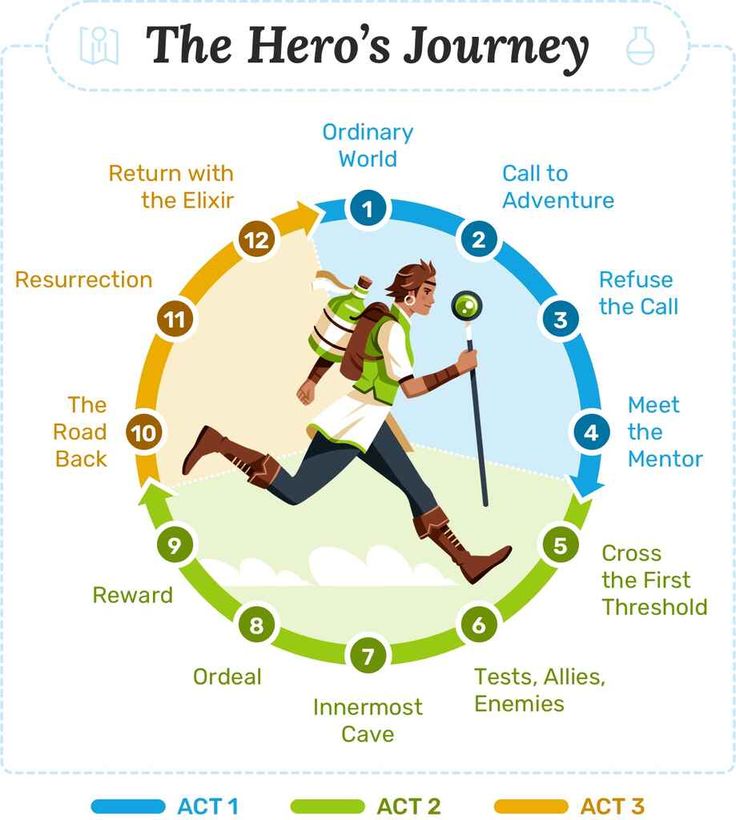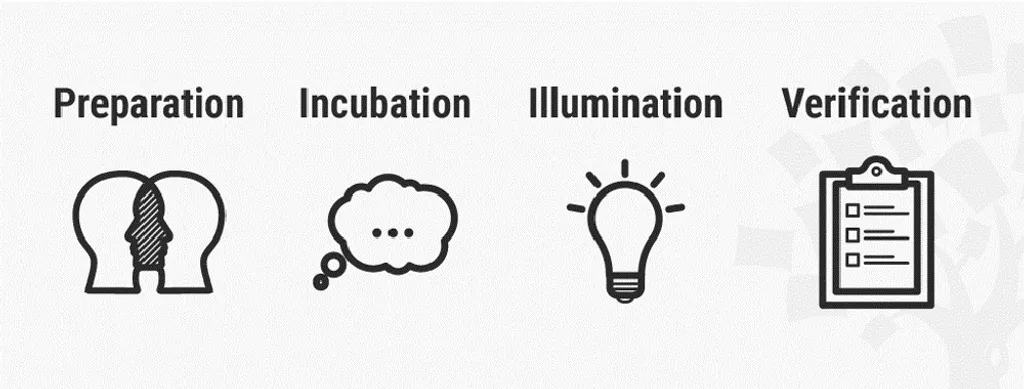Joseph Campbell’s The Hero with a Thousand Faces (1949) revolutionized our understanding of narrative structure.
By analyzing myths from Greek epics to Indigenous folklore, Campbell identified a universal pattern he dubbed the Hero’s Journey—a 12-stage framework that underpins nearly every transformative story.
From Star Wars to The Lion King, this archetype resonates because it mirrors our psychological growth. As Campbell famously said, “The cave you fear to enter holds the treasure you seek.”
In this deep dive, we’ll dissect each stage of the Hero’s Journey, explore its modern applications, and address common misconceptions. Let’s embark on this adventure together.
The 12 Stages of the Hero’s Journey
Campbell’s framework isn’t rigid—it’s a flexible roadmap. Below, we’ll unpack each stage with examples, psychological insights, and tips for writers.
1. Ordinary World
“This is where the hero’s story begins—a place of comfort, routine, and unfulfilled potential.”
- Example: Frodo’s peaceful life in the Shire (The Lord of the Rings).
- Psychology: The Ordinary World establishes the hero’s “baseline,” making their transformation palpable. It taps into our innate fear of change, a concept Carl Jung linked to the self vs. shadow archetype.
- UX Design Parallel: Just as users resist unfamiliar interfaces, heroes resist leaving their comfort zones.
2. Call to Adventure
“A disruption forces the hero to confront a new reality.”
- Example: Harry Potter receiving his Hogwarts letter.
- Modern Twist: In The Matrix, Neo’s call comes via a cryptic message: “Follow the white rabbit.”
- Tip for Writers: The call should challenge the hero’s core beliefs. Learn from Pixar’s 22 storytelling rules.
3. Refusal of the Call
“Fear and doubt paralyze the hero—a relatable human response.”
- Example: Luke Skywalker initially rejects Obi-Wan’s plea to join the Rebellion.
- Psychology: This stage mirrors the fight-or-flight response. As Brené Brown notes, vulnerability is the birthplace of courage.
- Visual Reference: Pacheco’s diagram sometimes conflates this stage with “Resurrection,” but Campbell’s original model keeps them distinct.
4. Meeting the Mentor
“Guidance arrives, often in unexpected forms.”
- Example: Morpheus mentoring Neo (The Matrix).
- Cultural Depth: In Hindu mythology, Krishna serves as Arjuna’s mentor in the Bhagavad Gita.
- Resource: Explore mentor archetypes in The Writer’s Journey by Christopher Vogler.
5. Crossing the First Threshold
“The hero commits to the unknown.”
- Example: Alice falling down the rabbit hole (Alice in Wonderland).
- UX Insight: This mirrors a user’s “aha moment” when adopting a new tool.
- Symbolism: Thresholds often involve literal gates, bridges, or portals—symbolic of irreversible change.
6. Tests, Allies, Enemies
“The hero navigates a maze of challenges.”
- Example: Katniss forming alliances in The Hunger Games.
- Psychology: This stage builds resilience, reflecting Carol Dweck’s growth mindset theory.
- Common Mistake: Avoid overcrowding this phase; focus on pivotal relationships.
7. Approach to the Inmost Cave
“The hero prepares for the ultimate ordeal.”
- Example: Simba confronting Scar at Pride Rock.
- Symbolism: The “cave” represents the subconscious—a theme explored in Jungian psychology.
8. Ordeal
“A life-or-death crisis forces the hero to evolve.”
- Example: Harry Potter’s duel with Voldemort in the Chamber of Secrets.
- Data Point: 90% of blockbusters feature a midpoint “all is lost” moment (Screenwriting Research Network).
9. Reward
“The hero claims a tangible or emotional victory.”
- Example: Moana retrieving the heart of Te Fiti.
- Tip: The reward should resolve a subplot but leave larger stakes unresolved.
10. The Road Back
“The hero begins their return, often pursued by lingering threats.”
- Example: Frodo fleeing Mount Doom with the One Ring.
- Visual Clarity: Pacheco’s diagram lists this under “Resurrection,” but Campbell’s model treats it as a separate phase.
11. Resurrection
“A final test where the hero confronts their shadow self.”
- Example: Tony Stark’s sacrifice in Avengers: Endgame.
- Psychology: This aligns with Jung’s individuation—integrating the ego and shadow.
12. Return with the Elixir
“The hero shares their hard-won wisdom.”
- Example: Dorothy returning to Kansas with newfound appreciation.
- Modern Application: TED Talks often follow this structure, offering “elixirs” of knowledge.
Why the Hero’s Journey Endures
- Universal Resonance: It mirrors the human lifecycle—birth, struggle, death, rebirth.
- Adaptability: The framework works for novels, films, marketing campaigns (e.g., Apple’s “Think Different”), and even UX case studies.
- Neuroscience: Stories following this structure activate dopamine and oxytocin release, fostering empathy (Harvard Business Review).
Common Misconceptions & Visual Aids
Diagrams like Juan Fernando Pacheco’s The Hero Journey often simplify or reorder stages (e.g., placing “Return with the Elixir” under “Ordinary World”). While visually engaging, they risk diluting Campbell’s intent. For accurate representations, refer to:
Applying the Hero’s Journey to Modern Storytelling
- Screenwriting: Use tools like Save the Cat! to map beats.
- Branding: Nike’s “Just Do It” campaigns position the customer as the hero.
- UX Design: Frame user onboarding as a “journey” with pain points and triumphs.
Conclusion: Your Invitation to Adventure
The Hero’s Journey isn’t just a storytelling tool—it’s a mirror reflecting our collective struggles and triumphs. Whether you’re writing a novel, designing an app, or navigating personal growth, remember Campbell’s words: “Where you stumble, there lies your treasure.”
Ready to begin your journey? Explore these resources:

